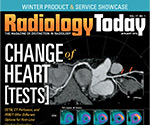 |
The recent film Concussion and the book League of Denial: The NFL, Concussions and the Battle for Truth, on which the film was based, have focused considerable public attention on mild traumatic brain injury (MTBI) and its potential implications. But the challenges of understanding and dealing with those implications are far more widespread in the United States military. More than 300,000 service members were diagnosed with MTBI between 2000 and 2015, according to data from the Armed Forces Health Surveillance Center. Those large numbers—along with the responsibility this country has to its service members—offer an obligation to pursue some better tools to objectively assess, and ultimately better treat, the frustratingly imprecise world of MTBI. Whether your concern focuses primarily on our service members, children playing contact sports, or college and professional athletes, the need to know more about MTBI is genuine.
Recent MRI research described in this month’s E-News Exclusive found a surprisingly high rate of objective evidence of injury—although researchers must learn just what that evidence means—in military service men and women with MTBI, perhaps a significant step in improving understanding, diagnosing, and treating head injury.
— Jim Knaub, editor |
 |
 |
MRI Finds High Rate of Brain ‘Scarring’ after TBI
A study of MRI exams performed on 834 service men and women who received mild traumatic brain injuries (MTBI) from blast-related incidents found revealed the presence of white matter T2 hyperintensities in 52% of those patients.
“We were really surprised to see so much damage to the brain in the MTBI patients,” says Gerard Riedy, MD, PhD, in a statement announcing the study published online in Radiology. “It’s expected that people with MTBI should have normal MRI results, yet more than 50% had these abnormalities.”
The hyperintensities, which are essentially scars on the brain, are tangible evidence in MTBI cases. “A scar on a brain scan is an objective finding,” Riedy says. “We start with the objective and build a foundation for the correct diagnosis of MTBI, and then bring in the subjective measures later.”
Full story » |
 |
 |
Change of Heart (Tests)
Nuclear stress test may currently be the norm for cardiac evaluation, but a growing number of physicians believe there’s enough evidence to support changing the paradigm, especially for patients at low to moderate risk. Read more »
Vendor/Partner
In an agreement with GE Healthcare, Temple University Health System will receive radiologic imaging equipment and services over a seven-year period intended to help the medical facility update its radiology offerings and improve workflow efficiencies—at a reduced cost. Read more »
Reporter’s Notebook: RSNA 2015
Read about the latest research findings presented at RSNA 2015. Read more »
5 Things to Watch in 2016
Once again, Radiology Today chooses five subjects that we believe will merit your attention in the coming year. Read more » |
 |
|
|
 |
“There have been several theories over the years and a fair amount of controversy about what’s happening in the joint when it cracks. We’re confident that the cracking sound and bright flash on ultrasound are related to the dynamic changes in pressure associated with a gas bubble in the joint.”
— Robert D. Boutin, MD, a professor of radiology at University of California, Davis Health System sharing the results of an ultrasound study presented at RSNA 2015 that investigated the cause and results of cracking knuckles |
 |
|
